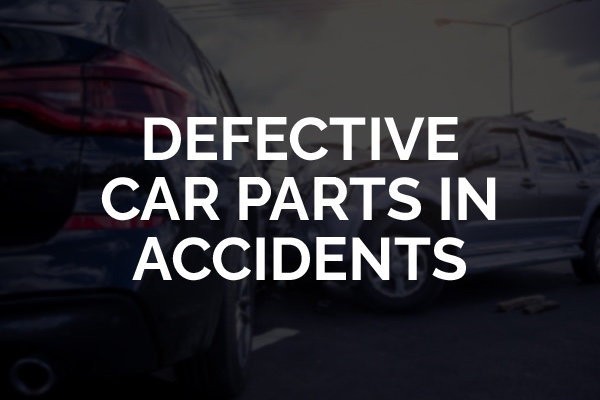Sometimes traffic accidents are not the result of driver negligence. The manufacturer sometimes fails to ensure the safety of the vehicle before handing it over to the customer, so it needs to take responsibility. In this case, the plaintiff must prove how the manufacturer failed and why they were responsible for the accident.
Car defects are more common than you think—
There are three defects that may affect vehicle safety. First of all, from the design point of view, the vehicle has defects before production. The normal use of a poorly designed vehicle can cause injury. A good example of this defect is the automobile, in which the fuel line connection can create a fire hazard.
The second defect is manufacturing. If parts are created incorrectly or incorrectly, manufacturing defects will result. If the shape or size of the parts of the vehicle is incorrect, it may cause abnormal operation or looseness, and cause injury to the driver, passengers or other people on the road.
The third type of defect is warning defect. This is the manufacturer’s failure to inform the customer of known vehicle hazards. An example of these defects is that the manufacturer knows that a certain component has caused multiple accidents, injuries or deaths to customers, but the manufacturer has not notified customers to recall the same type of vehicle, which includes defective components.
Vehicle defect overview–
Defective auto parts will affect the safe operation of the vehicle. Such defects can be electronic or mechanical. Even software designed for the safety of drivers and passengers may be defective. Defective parts can cause accidents. If these problems related to specific models are fully found, a recall notice will be issued.
The National Road Traffic Safety Administration requires manufacturers to recall parts that do not meet safety standards. This is to ensure that future accidents will not occur due to the same known causes. So far, more than 390 million cars and trucks have been recalled, 66 million auto parts and 46 million tires have been replaced due to defects.
Responsibility is determined when defects affect personnel. The breakage of vehicle parts will cause casualties, and the manufacturer can be responsible for the accident losses.
—Damage caused by defective parts—
Vehicle defects usually damage cars and trucks internally, and drivers may not be able to detect these defects. Defects can cause accidents and affect many people and property. All defects can result in thousands of dollars of damage, including fractures, abrasions, contusions, and minor injuries.
—Liability for defective parts—
In the case of personal injury, the plaintiff has the responsibility to prove that the car defect caused the accident. These cases can be quite complex, so the plaintiff usually seeks the help of an experienced personal injury lawyer. Lawyers may conduct investigations to obtain evidence of defects that led to the accident.
In order for such cases to succeed in court, the plaintiff must prove that the defect caused or contributed to the accident. In order to prove the manufacturer’s responsibility, the plaintiff must prove that the defect originated from the manufacturing process or other reasons when the vehicle was in the manufacturer’s hands.
When it is proved that the defect exists under the control of the manufacturer, the plaintiff must be injured by any financial liability of the manufacturer. The personal injury lawyer will review the case information, conditions and documents to determine all or part of the evidence of defect damage.
Deal with defects with lawyers—
When purchasing a vehicle, the driver entrusts the vehicle to meet the safety standards, and the vehicle quality ensures the safety of the user. If the defect causes an accident, the driver, passengers and others on the road may be injured. And even lose their lives.
In a case, lawyers may need to get many things from the accident victims, such as not refitting the vehicle before the prosecutor checks it. The case of defective auto parts is particularly sensitive in this field. Because it is necessary to prove that the defect is not the alteration after the car is sold to customers, but comes from the manufacturer. The required documents include vehicle purchase documents, service records, damage records, driver’s personal drug directory, insurance transaction details and traffic analysis.
The difficulty of defect cases involves the knowledge and experience of personal injury lawyers. In case of defects, these lawyers have correct awareness, investigation relationship and resources to prove these cases.







